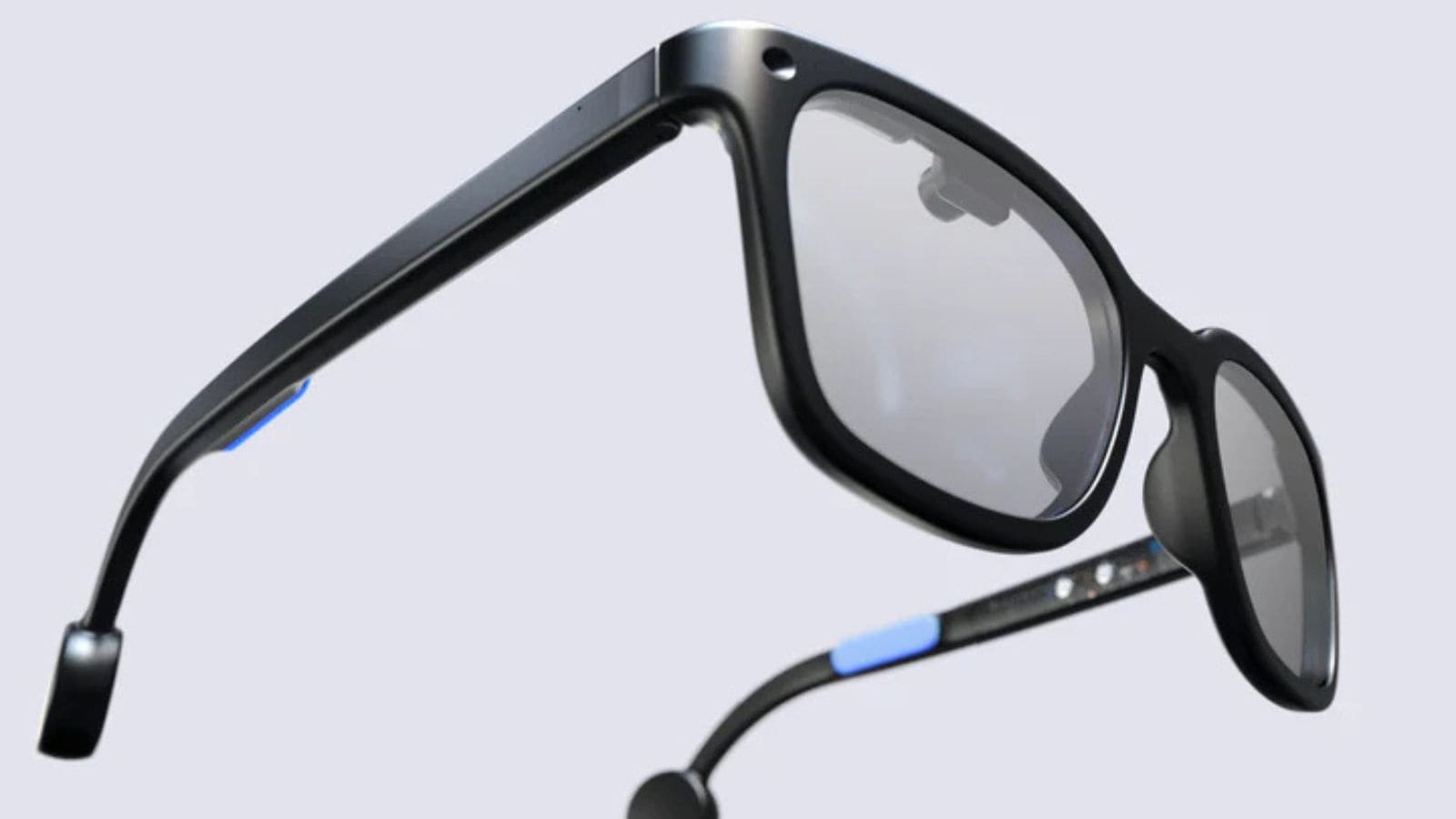There is a pair of new smart glasses on the block. Singapore-based tech company Brilliant Labs, known for its near-eye display platforms, recently unveiled its latest smart glasses. Named Halo, the wearable offers a new approach to displays in smart glasses. It is also dubbed as the world’s thinnest smart glasses with a built-in AI.
Halo has been designed to feel like a regular pair of glasses. It is essentially a fusion of sleek design and AI features. At about 40 grams, it is lightweight and reportedly comes with a full-colour display, advanced sensors, bone conduction speakers, etc. However, the most notable aspect of the device is its AI assistant, Noa, that is able to listen to conversations in its surroundings, sees objects, and remembers them as well. Reportedly, the AI assistant is also capable of building apps for the user.
What are Halo AI smart glasses?
Perhaps what sets the new device apart from the company’s earlier smart glasses is its tiny display module that the user looks into in the eyeglasses frame. The company seems to have worked on the concept of offering a user both audio and a colour display for visual data. Brilliant Labs had early on introduced Monocle, which was among the smallest virtual reality glasses, and another device named Frame.
As of now, Halo is in the pre-release stage, and, it is yet to reveal its full SDK or hardware details. On the other hand, Noa is an open-source AI assistant that has been built for true real-time conversations. Noa can see what’s happening around a user and respond to them like a human in a conversational way. The company claims that no matter how busy the surroundings, Noa listens and delivers useful insights on the go.
Halo is currently available for $299 in matte black, and the company is likely to begin global shipping by late November. Moreover, users can also buy prescription lenses.
Remembering every detail
When it comes to memory, Halo comes with something known as a narrative system that creates agentic memory. In simple words, it is like a daily AI journal. The system uses Halo’s sensors to record daily experiences and reportedly maintains them as a context-aware memory system. According to Brilliant Labs, this system allows Noa to understand a user’s preferences, routines and the people they come across. With this, Noa can recall details about a person the user met minutes or even years ago.
The company claims that it has built protection into every layer of the device. Reportedly, NOA converts all data inputs into secure, irreversible mathematical representations. It does not store any rich media, including audio, video or images, and the makers assert that nothing is relayed to third parties. The smart glasses endow full control to the user.
Creating apps with voice commands
Another striking feature of Halo is its Vibe Mode that allows users to build custom AI apps using only voice commands. According to the company, a user simply needs to tell Noa what they want, and it creates an application almost instantly. This makes Halo one of the first developer-friendly smartglasses.
Story continues below this ad
Although the device is slim and lightweight, it reportedly offers up to 14 hours of battery life. The device is powered by a B1 chip from Alif Semiconductor, which is claimed to be among the most efficient chipsets that have been optimised for AI and lower power consumption. Halo comes with a full suite of sensors, microphones, cameras, and speakers, and it is reported to excel at live translation and ambient context recognition.

